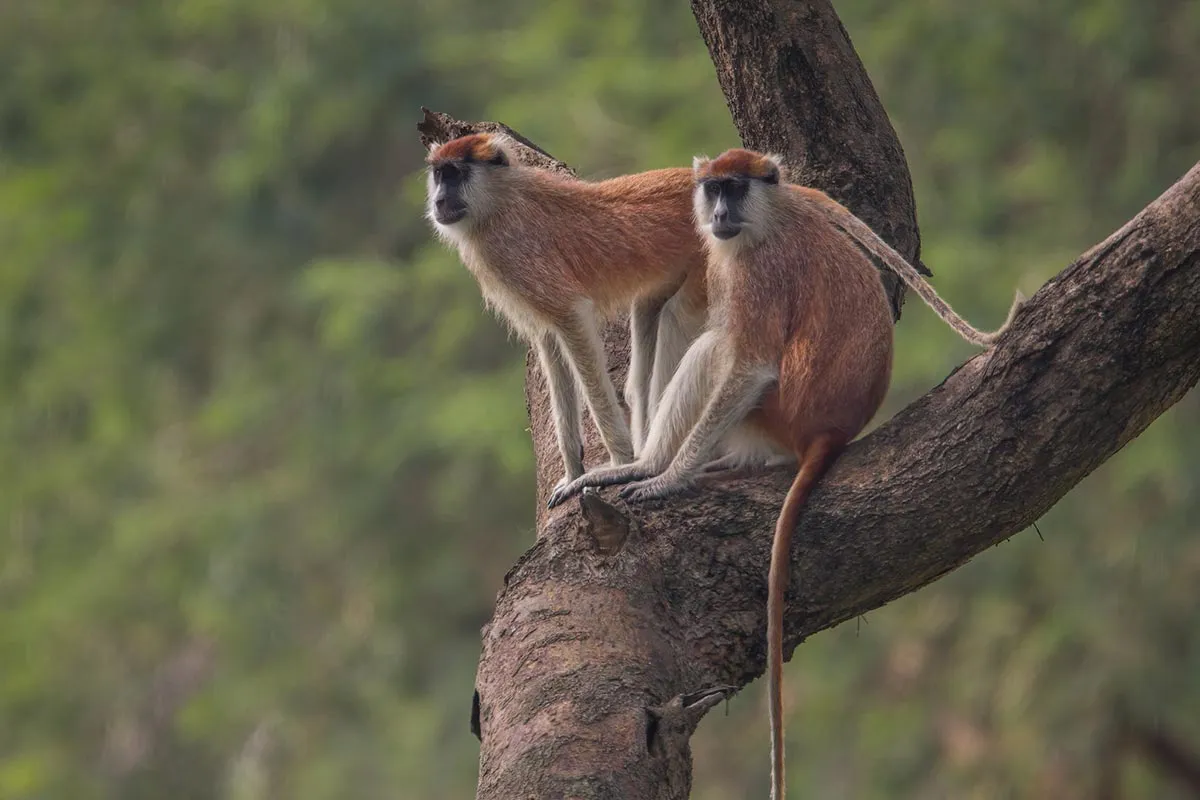Discovering the Charm of Patas Monkeys in Uganda
Patas Monkeys in Uganda. Patas Monkeys, scientifically known as (Erythrocebus patas), are a captivating primate species found across the African savannas, including Uganda. With their distinctive long limbs, reddish-gold fur, and unique behaviors, these monkeys are a fascinating subject of study and observation in the wild.
Habitat and Distribution:
Patas monkeys thrive in a variety of habitats, primarily favoring savannas, open woodlands, and semi-desert regions. In Uganda, they are often found in areas like Murchison Falls National Park, Kidepo Valley National Park, and Queen Elizabeth National Park, where the savanna landscape offers them an ideal environment; Their adaptability to diverse conditions allows them to range from West Africa to the Horn of Africa and down to the southern tip of the continent.
Physical Characteristics:
Known for their long legs, the Patas monkey is one of the fastest primates on land, with speeds reaching up to 34 miles per hour. Their reddish-gold fur, particularly on their backs, distinguishes them from other African monkeys. They also have distinctive white muzzles, giving them a unique facial appearance.
Behavior and Social Structure – Patas Monkeys in Uganda
Patas monkeys generally live in multi-male, multi-female groups, with a dominant male overseeing the troop. These groups can vary in size, typically ranging from 10 to 30 individuals, including juveniles. They are diurnal creatures, spending their days foraging for food, socializing, and navigating their expansive territories. Their diet primarily consists of fruits, seeds, insects, and occasionally small vertebrates.
Reproduction and Family Structure:
Breeding within these groups is carefully regulated by the dominant male, who controls mating opportunities. Females give birth to single offspring after a gestation period of around five to six months. The young Patas monkey is nurtured and protected by its mother and the group, learning crucial survival skills from other members of the troop.
Conservation Status:
Patas monkeys, though not considered endangered, face threats due to habitat loss, hunting, and occasional conflicts with humans. Conservation efforts in Uganda, like in other African countries, focus on preserving their natural habitats and raising awareness about their significance in the ecosystem.
Significance in the Ecosystem:
As seed dispersers and contributors to the balance of the savanna ecosystem, Patas monkeys play a crucial role in maintaining the biodiversity of the regions they inhabit. Their foraging habits and interactions with various plant species aid in the dispersal of seeds, promoting vegetation growth and diversity.
Tourism and Research – Patas Monkeys in Uganda
In Uganda, these monkeys attract wildlife enthusiasts, researchers, and tourists interested in observing their behavior and learning more about their ecological importance; Parks and reserves that are home to these primates offer opportunities for guided tours and research initiatives, providing valuable insights into their lives and habitats.
Challenges and Future – Patas Monkeys in Uganda
Despite their adaptability, the encroachment of human settlements, habitat fragmentation, and poaching pose significant threats to the long-term survival of Patas monkeys in Uganda and other regions. Continued conservation efforts, community engagement, and sustainable practices are essential in ensuring their future existence.
Patas monkeys are not only a captivating species to observe but also an integral part of Uganda’s rich biodiversity. Preserving their natural habitats and understanding their behavior are vital steps in securing their place in the country’s diverse ecosystem.








